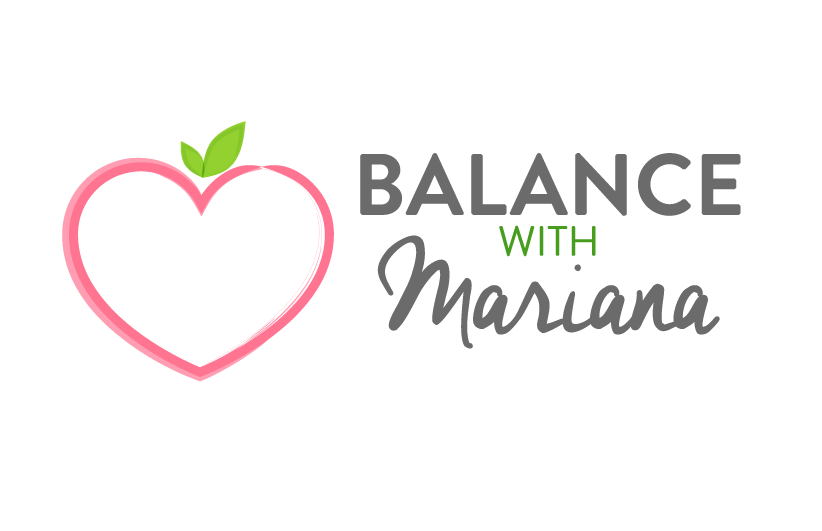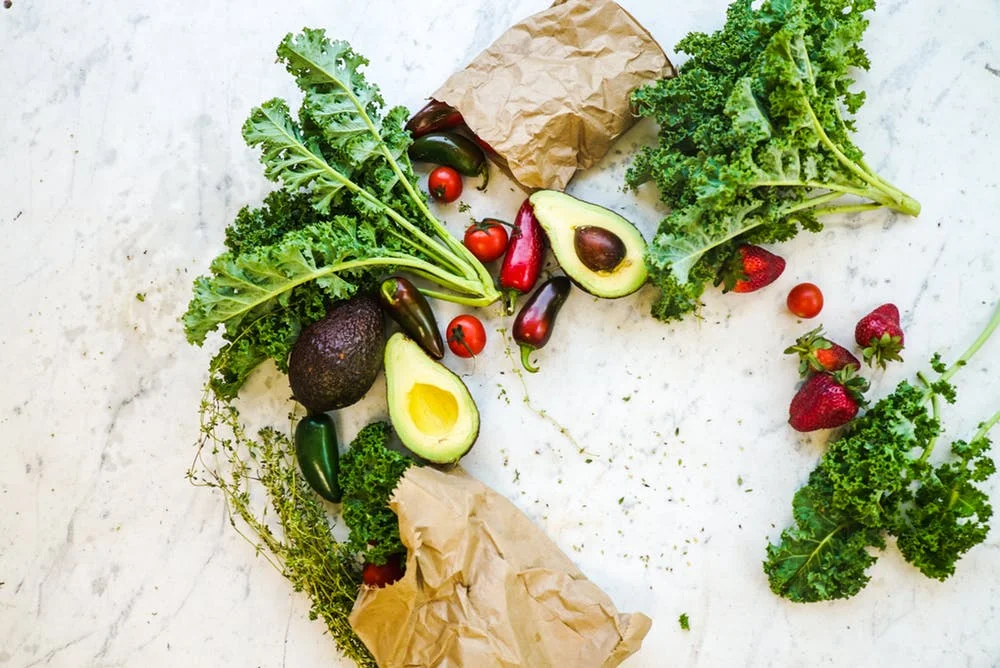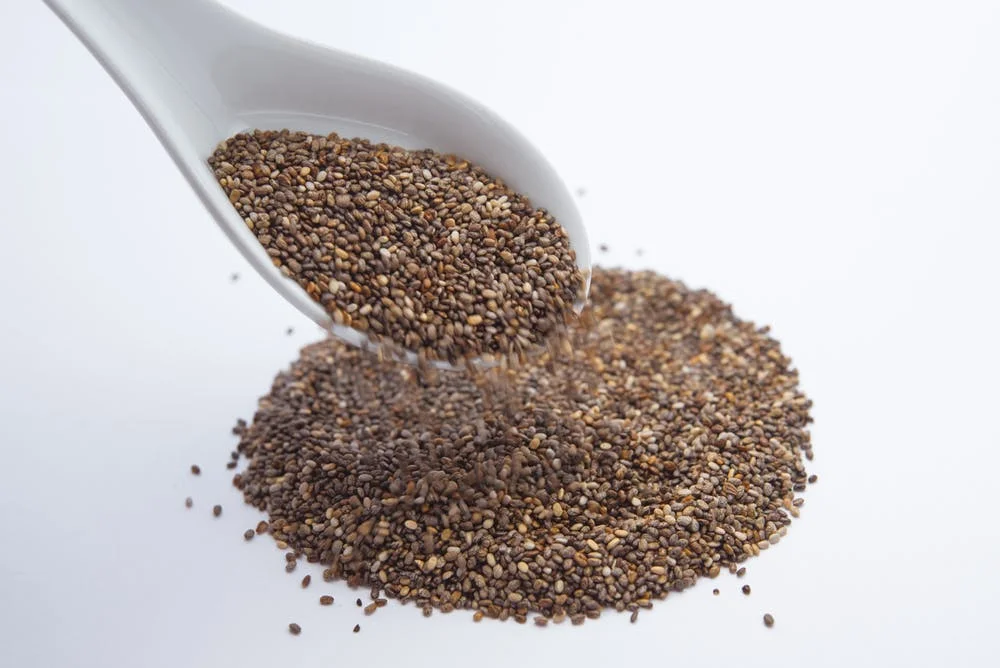Are you eating healthy but still not feeling 100%? Maybe your digestion is a bit off, or you’re still having trouble losing weight?
In order to feel and look your best, you need to ensure that you’re eating the right (amount and quality) macronutrients (protein, fats, carbs, fiber, fluids) and micronutrients (vitamins, minerals, antioxidants) on a daily basis - to support your hormones and your gut, and to consistently help your body “detox”, reduce inflammation, and stay vibrant.
Most people are lacking in their daily intake of one key nutrient: FIBER. And primarily because of this, they’re having trouble staying slim and feeling their best.
Getting sufficient (quantity, quality and variety of) fiber is absolutely crucial for optimal health, and has proven to help with a myriad of health issues ranging from constipation to type 2 diabetes and cancer. So don’t for one second think that fiber is “overrated”!
Sadly, the average person is estimated to consume only 5-10g of fiber a day, when they’re likely needing closer to 25-50g per day to feel their best.
So, from where should we be getting our fiber and why?
First off: What is FIBER?
Put simply, fiber comes from plants or carbohydrates (including fruits, veggies, beans, grains, nuts and seeds) that resist digestion/absorption in the small intestine, so they help move things along to your large intestine, where they then get broken down by your helpful gut bacteria, promoting healthy digestion.
Fiber helps CLEAN out your digestive tract, helping to get rid of things that shouldn’t be there (including toxins, extra hormones, cholesterol and overall waste).
How does Fiber help us? Health benefits?
It adds bulk to your “waste” (fecal matter) making your poop get big and allowing it to move quickly through your gut and out smoothly (so you can have a satisfying poop)
Fiber is needed for optimal production of your gut hormones, which help with your appetite control/satiety, and more!
Fiber helps with slower/better absorption of food, and can help prevent sugar highs/lows
Fiber helps product short-chain fatty acids, which are essential for digestion and overall optimal health
Fiber-rich foods are essential for a strong immune system, prevention of cardiovascular disease, diabetes, and better overall health
As fiber helps improve your gut health, it has a direct impact on your skin and overall BEAUTY. I consider it a key “beauty element”
Where do we find Fiber? What are different types?
INSOLUBLE FIBER is found in fruit and vegetable skins, in wheat, rye and brown/wild rice. Its not easily dissolved in water so is the main type of fiber responsible for creating buk (making your poop big). Insoluble fiber is therefore key for healthy bowel movements (which varies person to person, but generally should be daily and like a 3-4 on Bristol Stool Chart).
SOLUBLE FIBER absorbs liquid and is fermented in your large intestine by your gut bacteria – which is essential for good gut health. Soluble fiber helps soften your stool as it helps draw water into your gut. It also creates a feeling of fullness, and is the fiber primarily responsible for lowering LDL cholesterol and stabilizing blood sugar levels. You find it primarily in: seeds (like chia and flax seeds), oats, beans and lentils, and most fruits (especially berries and avocados).
Note: most of these foods (veggies, fruits, grains, beans, seeds etc) contain both soluble and insoluble fiber, just in varying amounts .
How much fiber do we need?
The recommended intake (for disease prevention) is about 14 grams of fiber for every 1000 calories consumed, which averages to roughly 30-40 grams per day for men and 25-35 grams per day for women. However, nowadays many health professionals recommend eating even more fiber than that to step up your health/wellness game! I find a lot of people do best with approximately 40-50 grams of fiber per day.
What if you have Gut issues? What if you get Gassy?
It’s totally normal that when you increase your fiber intake (primarily soluble fiber) - especially when done quickly, you’ll get gassy. Soluble fiber reaches your colon undigested, and when your gut bacteria breaks it down, it creates gas. So again, it’s normal (but can be avoided). And if you have any degree of IBS (very common nowadays) your symptoms may be worse.
So what can you do to limit this gas? Here are 5 key tips:
Make sure to increase your fiber intake gradually. Start with small portions at a time, especially with the cruciferous veggies (cabbage, broccoli, cauliflower, etc).
Eat slowly and CHEW your food well.
Pre-soak and cook your high-fiber foods to reduce amount of gas produced. I suggest soaking grains and beans with a bit of apple cider vinegar and soaking nuts/seeds with a pinch of sea salt. Slow cooking and pressure cooking in particular help, as does adding a piece of kombu seaweed when cooking your grains/beans to help remove gas.
Blend your greens/veggies. Enjoying them in blended smoothies and soups makes them easier to digest.
Increase your water intake. You MUST consume more liquid in your day to day when you eat more fiber or you may get backed up.
Take a probiotic supplement. Probiotics can help you ease digestion, strengthen your gut bacteria and eventually tolerate more fiber.
With IBS in particular, I find that it helps to focus mostly on cooked veggies (limiting your raw veggies, especially raw cruciferous and leafy greens), and eat small portions at a time, then you can start to gradually increase your veggies.
Also, chia and flax seeds (ideally soaked) are a great way to get tons of soluble fiber in a way that generally causes less irritation than large amounts of vegetables, so try adding 1 or both of these seeds to your daily diet.
Just remember to increase your water intake simultaneously!
TAKEAWAYS
Start increasing your daily fiber ASAP if you want to feel and look better, always paying attention to your body and going slowly. Increase your intake of veggies/ fruits/ nuts/ seeds/ beans and/or grains in your diet. Here are some examples that you can try to get you started:
Breakfast:
add 1 tbsp soaked chia and/or flax seeds to your morning smoothie or oatmeal or even pancake mix
add ½ cup fruit (ex. plums, papaya, pithaya, berries) to your breakfast (can also be right before your breakfast, if you’re like me and prefer not to mix fruit with protein)
add some leafy greens (spinach or kale) to your smoothie, or sautéed greens to your eggs or with your toast
Lunch and dinner:
aim for 50% or more of your plate being vegetables
add avocado and/or 1-2 tablespoons seeds to any plate/bowl
swap animal protein for plant-based protein 1 day a week (or more): swap your meat/chicken/fish for ½ cup beans of choice (black beans, chickpeas and lentils are some of my favorites) *just remember to soak them first
Remember to go slowly, CHEW YOUR FOOD well, drink tons of water, and especially with beans/grains/nuts/seeds – try soaking (and then cooking or dehydrating).
Love and FIBER,
Mariana
Related articles:



